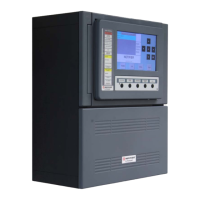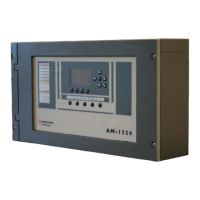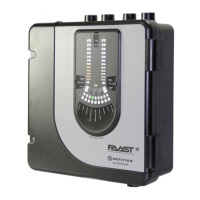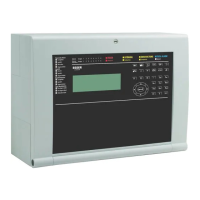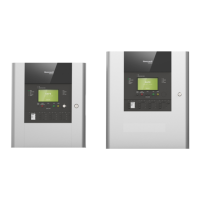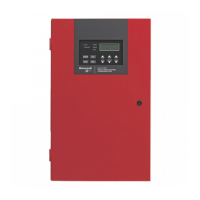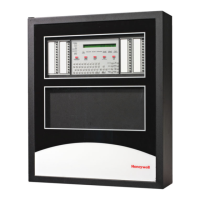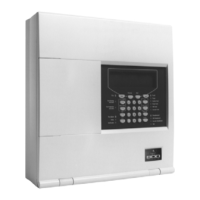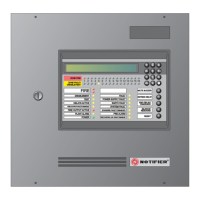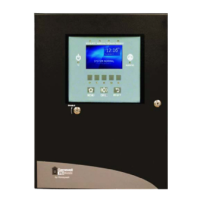5. MAINTENANCE
The sensor unscrews in an anticlockwise direction. Feed the connecting cable out through the
mounting point.
(9) FeedthecablefromthereplacementCertiedSensorinthroughthesensormountingpoint.
(10) FitthereplacementCertiedSensor.
ScrewthethreadedendofthereplacementCertiedSensorrmlyintothemountingpoint
until it is fully home.
(11) Cut the sensor cable to the required length.
(12) Connect the sensor wiring to the terminals.
Refer to the wiring notes recorded in step 3 and to the diagram and wiring tables in
Chapter 3.
(13) RetthetoptotheTransmitterUnitorCertiedJunctionBoxbase.
Cautions:
1. Ensurethatthereisnomoistureinsidetheunitbeforettingthelid.
2. Use only the captive bolts supplied, replacement with alternative bolts will invalidate
certication.
3. For the Transmitter Unit take care not to damage or strain the ribbon cable connecting
the lid and the base.
The Transmitter Unit top should be aligned using the locating pins on the base and then
loweredontothebase.TheJunctionBoxbasedoesnothavethelocatingpins.
Ensure that the lid retaining cable and/or wiring are not trapped and the O-ring in the top is
correctly located. Check that there is no discernible gap between the top and the base.
Tighten the captive M8 bolts to 5Nm (3.68 foot-pounds).
Note: Ifthereplacementsensoristobettedwiththeoriginalgassensingcartridge,thenremove
thecartridgefromthereplacedsensorandtittothenewonefollowingsimilarproceduresto
those in the sub-section 5.2.2.
(14) Switch on all associated power supplies.
(15) Check that the system is working correctly.
Use the Calibration Menu => Gas Challenge menu option to check correct operation of the
unit in the presence of the gas being sensed without triggering alarms, etc. (see Chapter 4).
Apply gas using a gas test module.
(16) Return the system to normal operation.
See Chapter 4.
